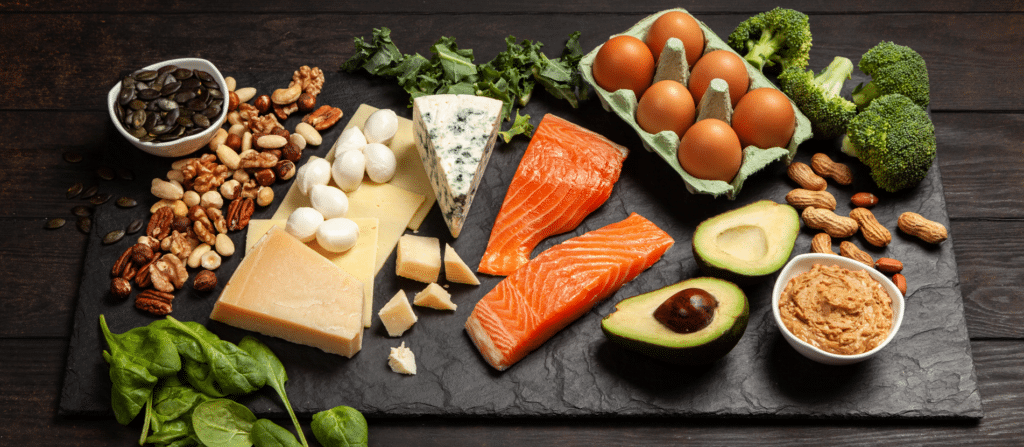- May 19, 2024
- Aws Al-Ani
- Uncategorized
Understanding Prediabetes
Prediabetes is a health condition characterized by blood sugar levels that are higher than normal, but not high enough to be diagnosed as type 2 diabetes. It is a critical stage as, without intervention, it’s likely to become type 2 diabetes within 10 years.

Causes and Symptoms of Prediabetes
The exact cause of prediabetes is unknown, but family history and genetics appear to play an important role. Lifestyle factors such as a sedentary lifestyle, being overweight, and certain dietary habits are also associated with a higher risk of developing prediabetes.
Prediabetes generally shows no symptoms other than high blood sugar. However, some people may experience increased thirst, a frequent urge to urinate, or blurry vision.
Prevalence of Prediabetes in Australia
In Australia, prediabetes is a significant concern. Two million Australians have prediabetes and are at high-risk of developing type 2 diabetes.
The Role of Diet in Managing Prediabetes
Diet plays a pivotal role in managing and potentially reversing prediabetes. It’s not just about the quantity of food consumed, but more importantly, the quality and type of food.

Importance of Diet in Managing Prediabetes
Prediabetes is a condition where blood sugar levels are higher than normal but not high enough to be classified as type 2 diabetes. A balanced diet is key for preventing or reversing prediabetes. While some foods, including those high in added sugar and refined carbs, can contribute to blood sugar fluctuations, others can optimize blood sugar regulation while promoting overall health.
Low Carb Diet for Prediabetes
A low carb diet is often recommended for managing prediabetes. This diet restricts carbohydrates, primarily found in sugary foods, pasta, and bread. Instead, you focus on eating protein-rich whole foods and vegetables.
How Certain Foods Affect Blood Sugar Levels
Foods with high carbs, like white bread, are rapidly digested and cause substantial fluctuations in blood sugar. On the other hand, foods with low carbs, like salmon, are digested more slowly, prompting a more gradual rise in blood sugar.
Reversing Prediabetes with Dietary Changes
By adopting a low carb diet and making other lifestyle changes, it’s possible to reverse prediabetes and bring blood sugar levels back to normal. Regular physical activity, healthy eating, and if necessary, losing weight are key components of this approach.
Key Nutritional Changes for Reversing Prediabetes
Prediabetes, a condition characterized by higher-than-normal blood sugar levels, can often be reversed with the right dietary changes. Here are some key nutritional changes that can help manage and even reverse prediabetes.

Portion Control
One of the first steps in managing prediabetes is portion control. It’s not just about what you eat, but how much you eat. Using smaller plates and bowls can help make your portion sizes look bigger. Limiting portion size to one cup or less at a time can also help manage blood sugar levels.
Foods to Eat More Of
A diet rich in proteins, non-starchy vegetables, and low-sugar fruits can help regulate blood sugar levels.
Proteins
Proteins, such as chicken with skin, egg whites, and soybean products, are essential for building tissues and regulating blood sugar.
Non-Starchy Vegetables
Non-starchy vegetables, such as leafy greens, broccoli, and peppers, are good to eat raw or steamed. They provide dietary fiber, vitamins, minerals, and beneficial compounds like polyphenols.
Low-Sugar Fruits
Fruits provide many important vitamins and minerals along with antioxidants and fiber. Focus on eating low sugar fruits such as berries.
Foods to Avoid
Certain foods can raise blood glucose and insulin levels and promote inflammation, increasing the risk of prediabetes and diabetes. These include foods high in added sugars, refined carbs, and polyunsaturated fats.
Added Sugars
Foods with added sugars, such as candy, desserts, sweets, baked goods, agave, honey, jams, and jellies, should be avoided.
Refined Carbs
Refined carbohydrates, such as white bread, white rice, white flour, pastries, and snack foods, have been stripped of fiber and other essential nutrients. They are digested quickly and have a high glycemic index, causing a spike in your blood sugar level.
Polyunsaturated Fats
Polyunsaturated fats can decrease insulin sensitivity, making it harder for your body to control blood sugar. Foods high in polyunsaturated fats include seed oil, vegetable oil, canola oil, and sunflower oil.
Learn more about what to eat and avoid for Prediabetes
Creating a Sustainable Prediabetes Diet Plan
Creating a sustainable prediabetes diet plan involves incorporating specific dietary changes that can help manage and even reverse prediabetes. Here are some tips to help you create a sustainable diet plan.

Sample Meal Plans
A prediabetes meal plan should be nutrient-dense, high in fiber, and low in saturated fats. Here’s a sample meal plan for a day:
Remember, this is just a sample. Your meal plan may vary based on your specific nutritional needs.
Tips for Eating Out
Eating out can be challenging when you’re trying to stick to a prediabetes diet. Here are some tips:
Handling Cravings
Click here to explore the link between Weight Loss and your Blood Sugar Levels
Interested In Speaking To a Diabetes GP?
We are more than happy to assist you on your journey, feel free to book an appointment with us using the button below:
Thank You for Reading!
References:
Understanding Prediabetes:
- https://microsoftstart.msn.com
- https://www.diabetesaustralia.com.au
- https://www.msn.com
- https://www.healthline.com
- https://www.dietdoctor.com
- https://www.medicalnewstoday.com
- https://www.verywellfit.com
- https://www.dietdoctor.com
- https://www.healthline.com
- https://www.mayoclinic.org
- https://www.healthline.com
- https://health.clevelandclinic.org
- https://www.levelshealth.com
- https://www.mayoclinic.org
- https://www.healthline.com
The Role of Diet in Managing Prediabetes:
- https://www.everydayhealth.com
- https://www.healthline.com
- https://www.hsph.harvard.edu
- https://www.medicalnewstoday.com
- https://www.healthline.com
- https://www.hopkinsmedicine.org
- https://www.bmj.com
- https://www.verywellhealth.com
- https://biocoach.io
- https://www.verywellhealth.com
Key Nutritional Changes for Reversing Prediabetes:
- https://www.msn.com
- https://www.bing.com
- https://www.verywellhealth.com
- https://www.healthline.com
- https://www.emedicinehealth.com
- https://health.clevelandclinic.org
- https://www.bing.com
- https://www.tasteofhome.com
- https://www.diabetes.org.uk
- https://diabetesmealplans.com
- https://www.healthgrades.com
- https://www.livestrong.com
- https://www.usenourish.com
Creating a Sustainable Prediabetes Diet Plan:

